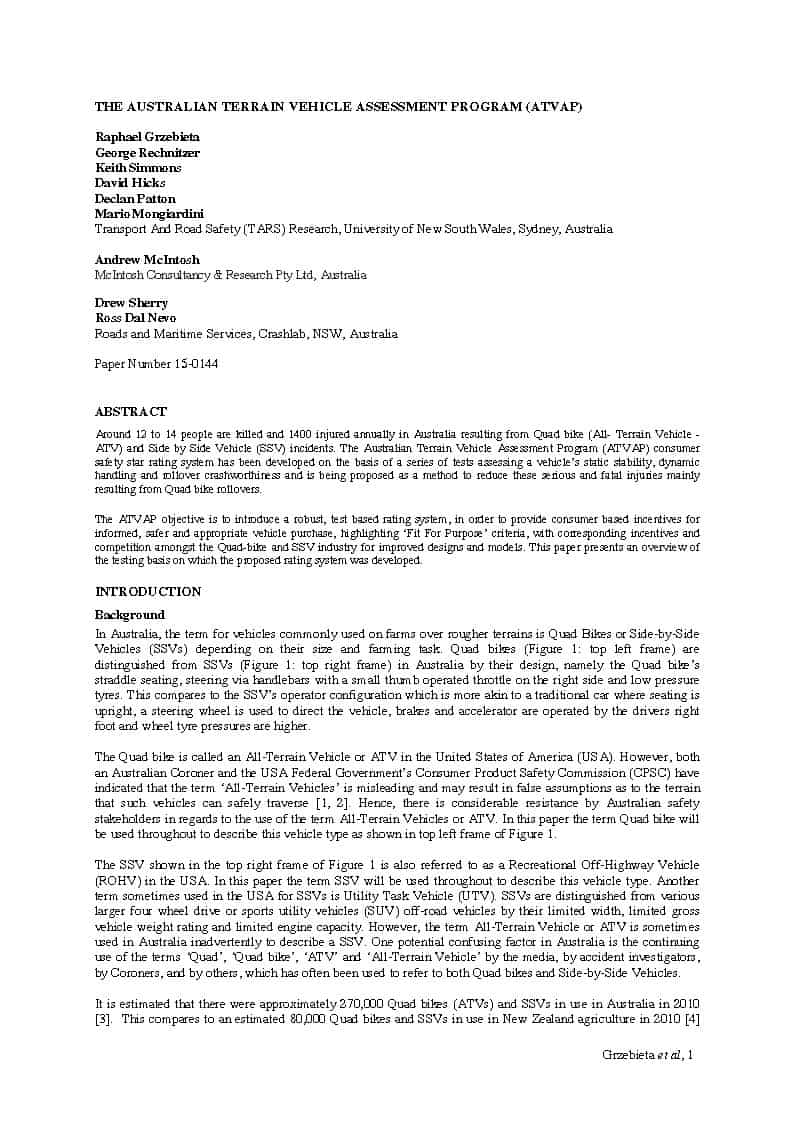Last week this blog reviewed the book Job Quality in Australia emphasising how worker safety, health and well-being is a vital element of job quality which, in turn, is crucial for Australia’s productivity. In preparation for a book launch in Sydney on 23 June 2015, the University of Sydney has released a media statement (available…
Annual Reports need OHS engagement
Successful safety management relies on communication. Sometimes this is informal, as in prestart meetings or toolbox talks; sometimes it is formal, such as with Annual Reports and legacy documents. It is important for occupational health and safety (OHS) professionals to understand how to communicate in these two formats and to address different audiences and readerships.
The latest Australasian Reporting Awards were handed out last week with the Civil Aircraft Safety Authority garnering the Work Health and Safety Reporting Award for 2015. Safe Work Australia’s Chief Executive Officer, Michelle Baxter, said, about the award:
“By including high quality work health and safety information in your annual report, you can establish your organisation as a leader in work health and safety, one in which work health and safety is not an ‘add on’, but integrated into business decisions and processes.”
In terms of Annual Reports, the OHS professional needs to be involved early in the report writing process rather than, as seems to happen most of the time, leaving it to the company secretary or the Communications unit. Annual reports need a consistent
Is methamphetamine a significant workplace hazard?
The Australian Industry Group (AIGroup) submission to the Australian Government’s Parliamentary Joint Committee on Law Enforcement inquiry into crystal methamphetamine, commonly known as Ice, has been made publicly available. The submission focuses on the risks to all workplaces, primarily, by imposing non-work statistics onto the workplace, lumping Ice in with other illicit drugs, and relying on anecdotal evidence. This approach is not unique to AiGroup and can also be seen regularly in the mainstream media but such an important Inquiry requires a much higher quality of evidence than anecdotes.
The submission references a recent Australian Crime Commission (ACC) report into Ice saying it:
“… paints a bleak picture for the community and Australian workplaces. This combined with greater ease of access, including in regional areas, places Australian workplaces at risk.
A key requirement for employers seeking to manage safety risks arising from persons attending work affected by Ice is the ability to conduct workplace drug and alcohol testing.” (page 3)
The ACC report refers almost exclusively to the hazards presented to hospital and emergency staff, not by Ice use by staff, and yet is able to link Ice-affected public to the drug testing of workers. Continue reading “Is methamphetamine a significant workplace hazard?”
“Job Quality” progresses OHS thinking
 On housing affordability this week, Australia’s Treasurer, Joe Hockey, suggested a solution would be to get a “good job”. This occurred a month or so after the publication of a terrific book (that Hockey obviously has yet to read) called “Job Quality in Australia“, edited by Angela Knox and Chris Warhurst for Federation Press. The editors write about the importance of job quality which “…affects attitudes, behaviour and outcomes at the individual, organisational and national level” (page 1) and job quality’s political context:
On housing affordability this week, Australia’s Treasurer, Joe Hockey, suggested a solution would be to get a “good job”. This occurred a month or so after the publication of a terrific book (that Hockey obviously has yet to read) called “Job Quality in Australia“, edited by Angela Knox and Chris Warhurst for Federation Press. The editors write about the importance of job quality which “…affects attitudes, behaviour and outcomes at the individual, organisational and national level” (page 1) and job quality’s political context:
“While the current Abbott government is primarily concerned with improving Australia’s macro-economic position, such a position is unlikely to be achieved and sustained without a policy agenda focusing on job quality.” (page 2)
Significantly for this blog’s readership, the book has a chapter, written by
New research lays down the challenge on quad bike safety
 In June 2015 a research report was presented to a traffic safety conference in Gothenburg, Sweden that is set to reignite the debate on quad bike or all terrain vehicle (ATV) safety in Australia.
In June 2015 a research report was presented to a traffic safety conference in Gothenburg, Sweden that is set to reignite the debate on quad bike or all terrain vehicle (ATV) safety in Australia.
The paper entitled “The Australian Terrain Vehicle Assessment Program (ATVAP)” (Paper No.15-0144-W in the Technical Papers section of the
Agricultural safety case study from Australia
In early June 20915, the Rural Industries Research and Development Corporation (RIRDC) provided a case study of agricultural safety and the importance of safety culture – Raby Stud, part of Hassad Australia. The study shows great potential but the promotion of this case study would be more convincing if more OHS detail was available and if there was better coordination of its media.
RIRDC emphasised that:
“The injury rate is now close to zero at ‘Raby Stud’, near Warren in New South Wales, thanks to the attitude that ‘it won’t happen to me’ is simply not good enough to ensure everyone gets home safely to their families every night.”
Continue reading “Agricultural safety case study from Australia”
